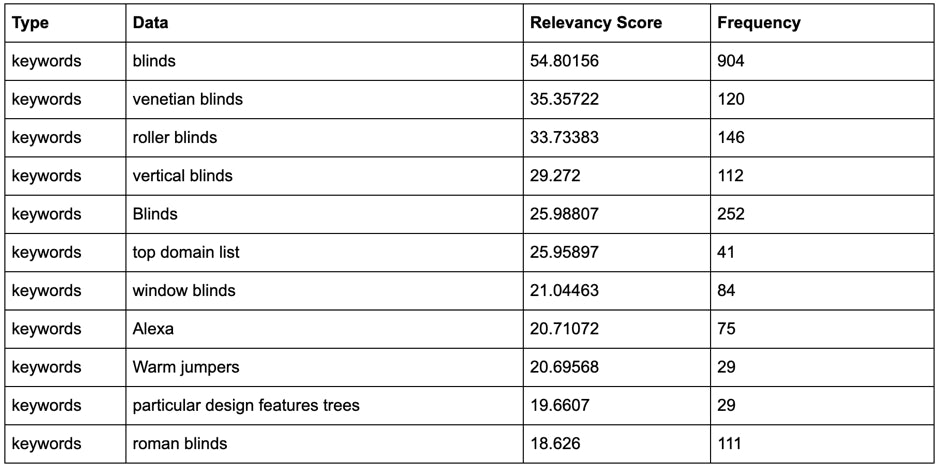Analysing the link profile of a website is one of the most important parts of developing an SEO strategy.
After all ‘links’ are still seen as one of the most powerful ranking factors, so if your aim is to improve rankings you need to have a deep understanding of all aspects of your link profile — moving beyond just looking at legacy link metrics such as link volumes, anchor texts and domain authority.
To date, most link profile analysis is usually focused on link volume and some variety of authority score, depending on what tools you use it might be Moz’s DA (Domain Authority) or Ahrefs’ DR (Domain Rating), for example.
The usual outcome of this is a figure of what the ‘link gap’ (difference in quantity of links) is compared to the leading competition and how many pieces of coverage/links need to be generated to close this gap.
This approach has served its purpose to an extent; however, it completely ignores one vital aspect of a link profile that could decide whether you appear in 1st or 10th position — relevancy of the linking content to your target keywords.
To illustrate the point about relevancy, let’s consider the following pieces of coverage linking back to Evanscycles.com, one of our clients at Journey Further, and think about which is likely to pass the most ranking power.

Data from Ahrefs and IBM Watson Natural Language Understanding Tool
If you’re focused on Domain Rating (DR) your initial thoughts are most likely that the Timeout coverage will pass more power than the Tomsbiketrip.com article, but on a more thorough review you can see that the Timeout article only briefly covers cycling as a topic, whereas the Tomsbiketrip.com article is extremely targeted towards cycling, touring bicycles and brake systems. It’s clear that the second article, although ‘weaker’ in terms of authority would most likely pass far more ranking power back to Evans Cycles.
This isn’t news to anyone in SEO, everybody knows the relevancy of the link profile is important. There are multiple Google patents to suggest that the relevancy of the coverage you receive has a direct impact on your ability to rank, such as phrase based indexing or topical page rank.
The issue is that it’s really difficult to gather reliable data on link relevancy.
At present, the relevancy of a link profile can only be judged by using a combination of the following methods; reviewing anchor text, using tools to look at broad content category (e.g. Majestic SEO), and/or manually reviewing a link profile to get a broad understanding of what the link profile is related to.
All of these current techniques can be inaccurate and also time intensive, especially if you have a large link profile.
This is where machine learning comes in.
At Journey Further we use a tool that analyses an entire website’s link profile rather than individual articles, using the same ‘Natural Language Understanding’ (from the IBM Watson Machine Learning API toolset) data shown in the example at the beginning of the post, extracting recurring keywords and entities, as well as a relevancy and frequency score for each topic.
This would give a data-led process to judge link profile relevancy, allowing us to understand the full characteristics of a link profile aside from just volume and quality metrics (DR/DA).
Off the back of this insight we can understand what gaps there are in the relevancy of the link profile and use this to guide our PR/content strategies to attract links from content that satisfies these areas.
Google uses natural language machine learning in its ranking algorithm, so in addition to allowing us to analyse link profiles in bulk — natural language understanding allows us to view content in a very similar way to how a search engine would understand it.
Here’s an example of the type of insight that you can pull from the data using one of our client’s competitor link profiles — blinds-2go.co.uk
We can see the top keywords present in content linking to the site below, as you’d expect the top keywords are all types of blinds.
However, digging deeper we can identify topics that have disproportionately poor representation in the link profile (or do not feature at all), for example ‘Roman Blinds’ has a relevancy score of 18.62, nearly half that of the top product areas — now we have this information we can use this topic area as a potential target to build links/coverage around, improving the relevancy score of the topic within the link profile.

Link profile relevancy summary — Blinds-2go.co.uk
That’s just one example of how Natural Language Understanding (NLU) analysis can be used. This data provides a more accurate understanding of our clients’ link profiles and deeper insight into the strengths and weaknesses of their websites — and ultimately, where we should be focusing to improve their rankings.







